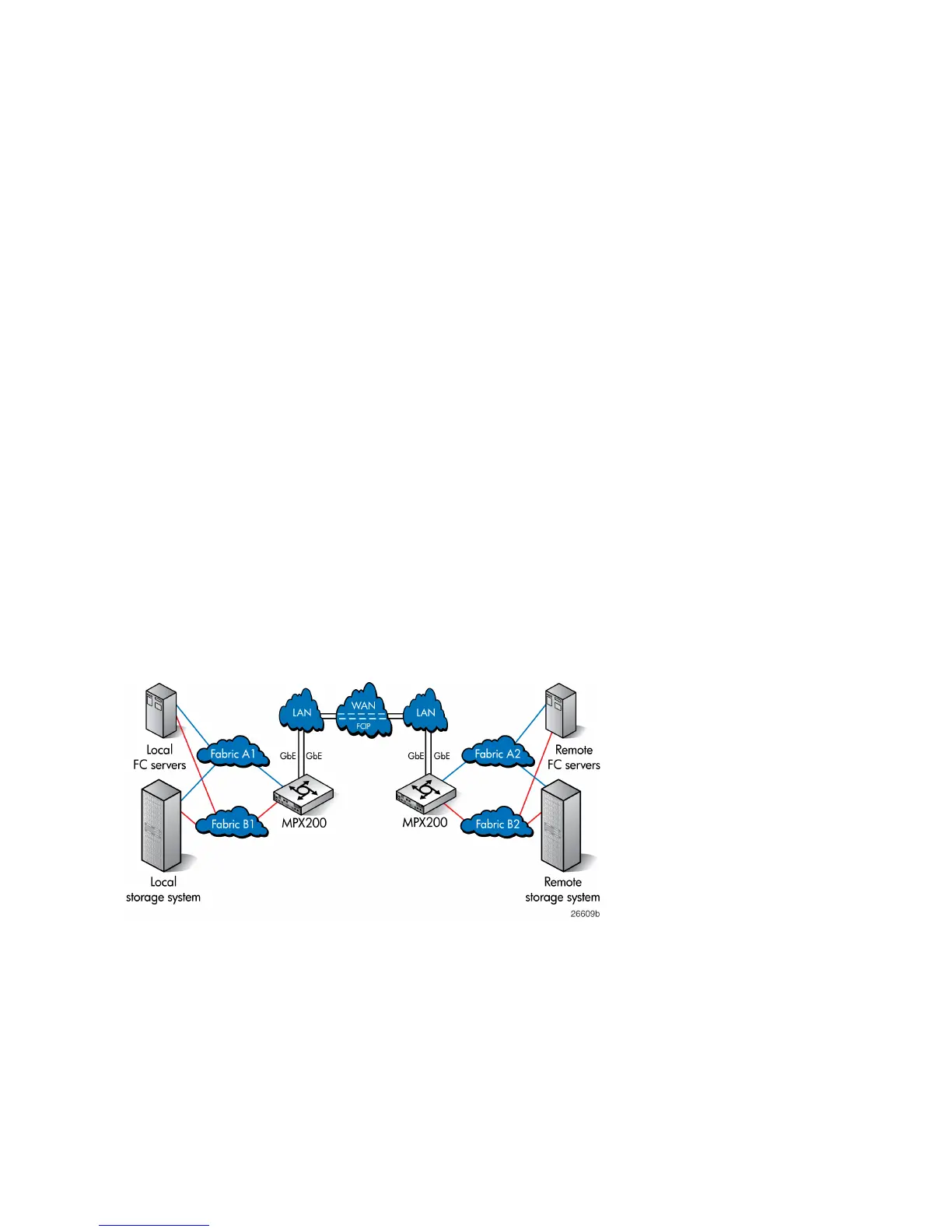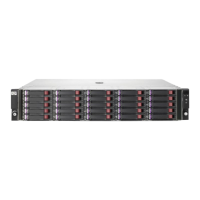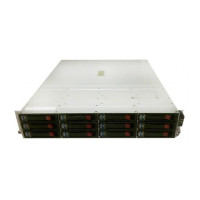FCIP and iSCSI performance
In most use cases, mixing iSCSI and FCIP on the same blade will provide adequate performance.
However, high availability/performance goals may dictate a dedicated MPX200 for each function
or protocol. For example, if your performance needs are for more that 8 Gb/s of FC access for iSCSI
alone, configuring FCIP on the same blade would limit FC access to only 8 Gb/s and would not meet
the performance requirements for that situation.
MPX200 iSCSI/FCIP configurations
The MPX200 router supports the following configurations:
• Figure 60 MPX200 basic FCIP configuration with one or two long-distance links
• Figure 61 MPX200 high-availability configuration with one or two long-distance links
• Figure 62 MPX200 high-availability with fully-redundant long-distance links
• Figure 63 MPX200 configuration with remote IP distance gateway (mpx110)
• Figure 64 on page 106 MPX200 highly redundant pairs of gateways with one or two long-distance
links
• Figure 65 on page 106 MPX200 highly redundant pairs of gateways with fully-redundant long-
distance links
• Figure 66 on page 107 MPX200 simultaneous iSCSI and FCIP with remote dedicated FCIP blade
• Figure 67 on page 107 MPX200 simultaneous iSCSI and FCIP, both local and remote
• Figure 68 on page 108 MPX200 iSCSI and FCIP dedicated blades, both local and remote
• Figure 69 on page 109 HP Continuous Access EVA 3–site configuration with four gateways
• Figure 70 on page 110 HP Continuous Access EVA 3–site configuration with six gateways
• Figure 71 on page 111 HP Continuous Access EVA 3–site configuration with eight gateways
• Figure 72 on page 112 HP Continuous Access EVA 3–site configuration with six gateways with full
peer-to-peer connectivity
Figure 60 MPX200 basic FCIP configuration with one or two long-distance links
.
MPX200 FCIP104
